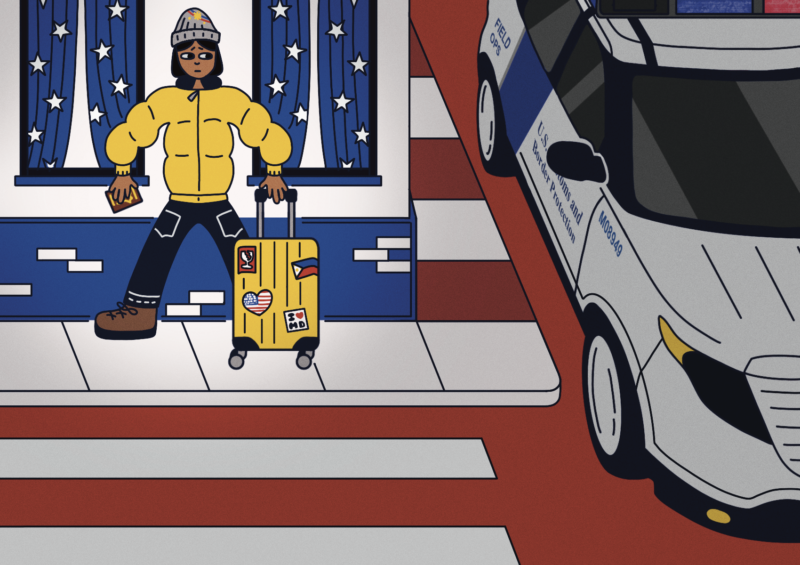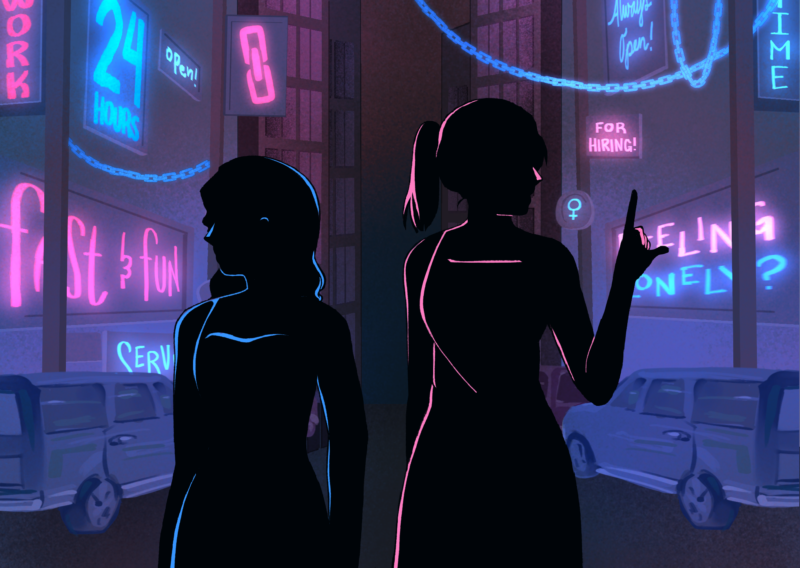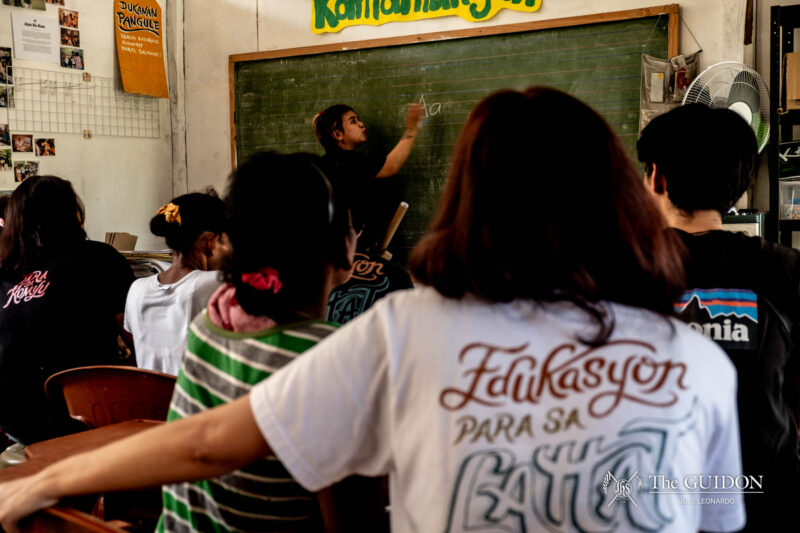Fans around the world went hysterical over the recent film adaptation of John Green’s best-selling young adult novel The Fault in Our Stars (TFIOS) (2012). But according to Time writer Jack Linshi, the country most obsessed with Green’s star-crossed lovers is actually none other than the Philippines.
Long before the TFIOS craze began, books like Harry Potter and the Philosopher’s Stone (1997), Twilight (2005) and The Hunger Games (2008) were already capturing our attention. With fans flocking to the Manila book signings of writers like Neil Gaiman, Mitch Albom, Nicholas Sparks, Ransom Riggs, Tahereh Mafi and Veronica Rossi, it seems foreign young adult works have made an impression on Filipinos.
Sadly, the same cannot be said of their local counterparts. For instance, the anthology Growing Up Filipino: Stories for Young Adults edited by Cecilia Brainard rarely rings a bell. Tagalog romance novel She’s Dating the Gangster (2013) by Bianca Bernardino is often treated as a joke. But all is not lost—thanks to the efforts of various writers, publishers and enthusiasts, the future of the genre is starting to look much brighter.
Genres within the genre
The first challenge that the young adult genre faces is defining itself—even young adults themselves don’t know what they want. “I’m not entirely sure what topics intrigue young adults nowadays since tastes are so subjective and adolescents can be a fickle bunch,” says Michelle Paterno, a lecturer from the English Department who specializes in children’s literature.
At its core, young adult fiction reflects the struggles of the youth, especially as they enter adulthood. Whether it’s the 1960s or the 1990s, “teenage romance and adventure stories such as The Hardy Boys and Sweet Dreams series have always been part of the rite of reading passage of most teenagers,” explains Paterno. “Today, it is still pretty much the same thing with a few vampires and zombies thrown into the mix.”
With all these genres coexisting under the term “young adult,”there are varying opinions as to what constitutes a real young adult piece. Edgar Samar, an assistant professor from the Filipino Department and author of the recently released Si Janus Silang at ang Tiyanak ng Tabon (2014), believes that the genre fills the gap between children’s literature and “mature” literature. “There are many crossovers in terms of age,” he says in a mix of English and Filipino, adding that this ranges from children as young as seven years old up to adults in their forties.
On the other hand, Leanna Labrador, a junior literature (English) major, views it differently. “Young adult isn’t so much about the age of the audience but the age of the main characters,” she says. “Young adult fiction doesn’t mean fiction for young adults, but fiction about them.”
Paperback and glossies
Although fewer young adult titles have been published locally compared to their Western equivalents, Paterno remains optimistic: “The field is quite young in the Philippines and so there is always so much potential for growth and exploration.”[blockquote author=”Michelle Paterno, Lecturer, English Department” pull=”pullright”]The Field [of young adult fiction] is quite young in the Philippines and so there is always so much potential for growth and exploration.[/blockquote]
Mythspace, a comic series featuring a young Filipino searching for his family in a galaxy filled with aliens inspired by Philippine folk monsters, was first published in 2012. In the same year, Summit Media launched Kwentillion, the first magazine catering to the same audience through comics and short stories, many of which were inspired by Philippine myths.
Unfortunately, despite Kwentillion being an exciting and experimental concept and an alternative to the traditional book format, only one issue was ever published. “While the magazine was a creative success, it was released as a magazine and held up against the standards of other magazines Summit was publishing,” says Paolo Chikiamco, co-editor of Kwentillion and the author of Mythspace.
Even without it, Summit Media still addresses the needs of young readers through Pop Fiction, one of the publishing arms of Summit Books. It takes the most popular stories of Filipino authors from Wattpad, a worldwide online community for writers and readers, and prints them. Some of its most popular titles include She’s Dating the Gangster, The Bet (2013) and The Despicable Guy (2013).
Samar’s Si Janus Silang at ang Tiyanak ng Tabon is also a recently released title and the first in a trilogy. It follows the adventures of 13-year-old Janus as he unlocks the mystery of the deaths caused by an online role-playing game and discovers what links him to the myth of the tiyanak.
“Gusto ko talaga i-revisit yung ating mga mito at alamat, at i-construct para mas maging relatable sa kabataan ngayon (I wanted to revisit myths and legends, and to reconstruct them in such a way that would make them more relatable to today’s youth),” shares Samar.
Is West best?
Still, despite the efforts of many of our local authors, a number of readers still prefer to gush about Hazel Grace and Augustus over Athena and Kenji from She’s Dating the Gangster. (The best-selling romance novel, which was adapted into a movie starring Kathryn Bernardo and Daniel Padilla, revolves around their plan to spite Kenji’s ex-girlfriend by pretending that they are in a relationship.)
“[Philippine young adult fiction] can be easily overlooked and therefore, often times, misjudged and taken for granted,” says Paterno. A lot of this has to do with a combination of colonial mentality and the bandwagon effect. Many of us have a preference for foreign labels and brands, a mindset that manifests itself when we are quick to call local works “baduy” or “jeje.”
Part of the blame also falls squarely on the shoulders of writers who end up adapting Western ideas, thinking that they will sell because there is already an established demand for them. “But if readers continue to just read the same kinds of stories over and over again, that will be a problem as storylines become tired repetitions of old formulas,” explains Paterno.
These tropes leave something more to be desired, such as in The Despicable Guy, where yet another romantic relationship somehow blooms out of a mutual hatred. Its author, Leng de Chavez, admits that perhaps something is still lacking in these stories: “I really want to improve the content of the story to make it more relatable to the older audience.”
The flip side
While local young adult fiction may have this reputation, Samar doesn’t think that rash judgments should be made. “Ang main agenda ay entertainment, ‘di ba? Wala ka namang regard kung maganda ‘yan o hindi. Maganda ‘yun hangga’t nag-eenjoy sila (If its main agenda is to entertain, then it doesn’t matter if it’s good or not; it’s good for as long as readers enjoy reading these things),” he says.
Likewise, Samar believes that websites like Wattpad are also good for building social networks and providing avenues for people to write more. Labrador attests to this, adding, “[We need] more writers. More media exposure. More distinction by genre. More diversity. Having [more] young adult book series would help, as well.”
Although local young adult fiction may still have a long way to go, it has definitely come further than where it was before. “Say like five years ago, you [couldn’t] see any Filipino [young adult fiction] in any bookstore. Now, try to check bookstores and you’ll be surprised to see tons of [young adult] books written by young Filipino authors,” says de Chavez.
Spaces on shelves and cinemas are opening up for the local genre, and hopefully Filipino young adults will be more welcoming to local titles as well. For the genre to be more significant to today’s young adults, Paterno suggests covering grittier topics, but “in a careful and unpretentious manner.”
“Such themes will mean taking bigger risks on all sides—readers, writers, and publishers, not to mention irate parents and more conservative institutions. So the question is, are Filipinos ready for that?”







